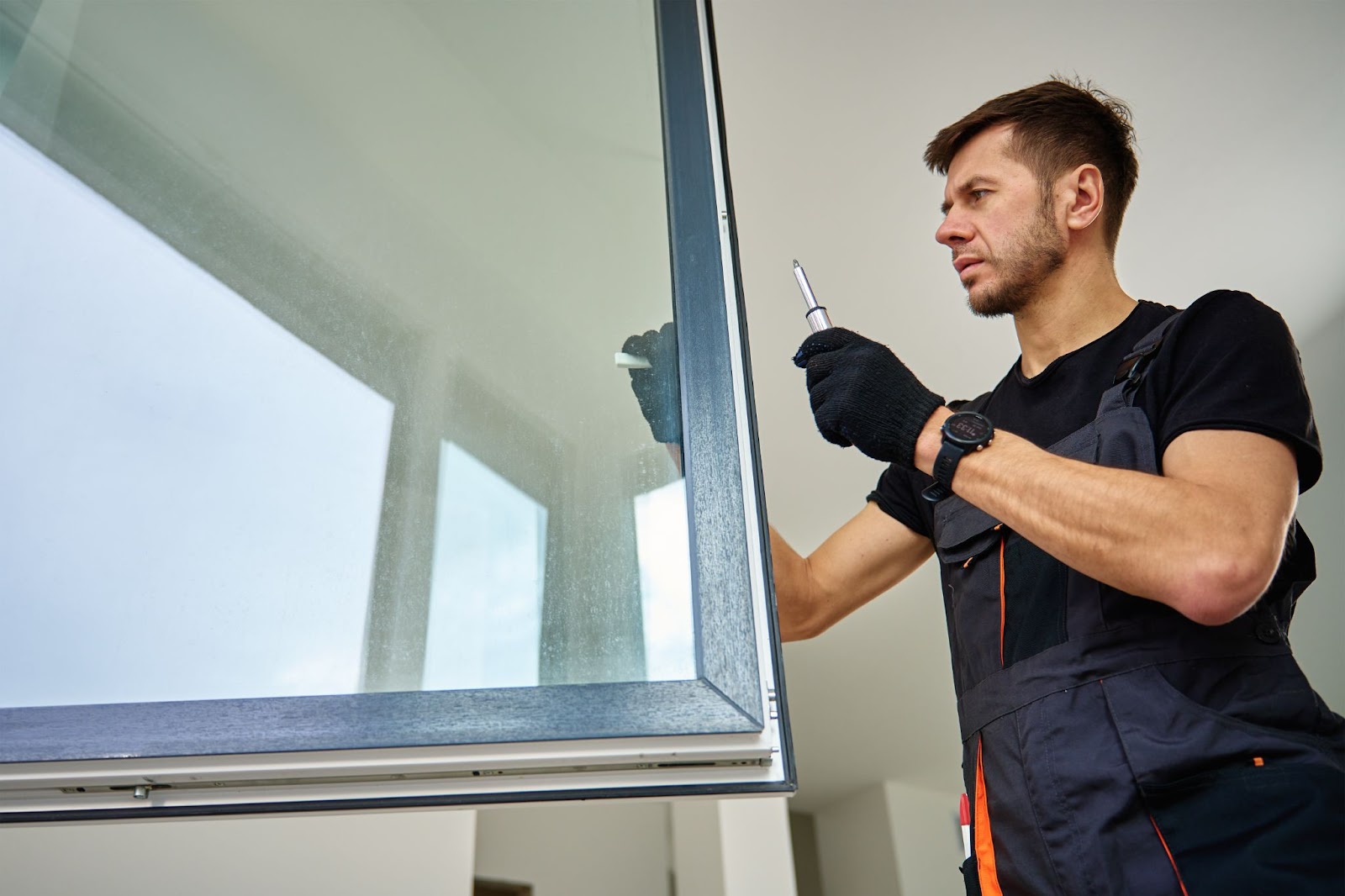Broken or damaged window glass can disrupt your home’s comfort and security. Replacing the glass may seem daunting, but it’s manageable with the proper knowledge. A well-replaced window glass restores functionality and enhances the appearance of your home. Additionally, choosing the right materials ensures durability and long-term value. Knowing the steps involved can save you money and give you peace of mind.
Understanding the Basics of How to Replace Glass in Windows
Replacing glass in windows involves more than simply swapping out a broken pane. It’s a process that demands attention to detail, a clear understanding of the damage, and careful consideration of the materials involved. Each window has unique characteristics that can influence the complexity and approach required. A well-handled replacement not only restores the window’s functionality but also ensures safety and enhances the overall appearance of the space. Understanding the essentials lays the foundation for a successful and seamless outcome.
Types of Window Glass and Frame Materials
Different windows use varying glass and frame materials. Common types include single-pane, double-pane, and tempered glass. Single-pane glass is easier to replace but offers less insulation. Double-pane windows provide better insulation but involve more complex replacement. Frame materials like wood, aluminum, or vinyl also impact the replacement process. Wooden frames are flexible but require careful handling to avoid damage, while aluminum frames are durable but harder to modify. Understanding these materials helps you approach the task correctly.
Tools and Materials Needed for Window Glass Replacement
Replacing glass in windows requires specific tools and materials. Basic tools include gloves, safety goggles, a putty knife, a tape measure, and a glass cutter. You’ll also need replacement glass, a glazing compound, and a heat gun to soften old putty. High-quality tools make the process easier and safer, so invest in durable and reliable options. These materials are available at local hardware stores, home improvement centers, or online retailers. Comparing options and reading reviews helps you choose tools that provide reliability and value for your money.
How to Remove and Replace Glass in Windows
Broken glass removal is the first and most critical step. Start by wearing safety gear to protect yourself from sharp edges. Carefully remove loose shards, working slowly to avoid injury or further damage. Use a putty knife to scrape away old glazing or sealant holding the glass in place. Dispose of the broken glass responsibly by wrapping it securely and placing it in a sturdy container. Taking your time ensures thorough and safe removal.
Preparing the Window Frame for New Glass
Once the glass is removed, the frame needs preparation. Inspect the frame for damage, such as cracks or rot. Sand down rough edges and clean the area thoroughly to ensure proper adhesion. Apply a thin layer of primer if necessary, especially on wooden frames. Repairing minor cracks with wood filler can reinforce weak areas in wooden frames. Aluminum frames may require bending back into shape with gentle pressure and specialized tools. Ensuring the frame is smooth and intact provides a sturdy base for the new glass and prevents issues later.
Installing the New Glass in Your Window
Installing new glass requires precision and care. Measure the opening accurately and cut the replacement glass to size if it isn’t pre-cut. Gently place the glass into the frame, ensuring it fits snugly without forcing. If your window uses glazing points, secure them to hold the glass in place. Take your time to position the glass correctly for a clean finish.
Securing the Glass and Sealing the Edges
Securing and sealing the glass is vital for durability and insulation. Apply glazing compound evenly around the edges to hold the glass in place and prevent drafts. Use a putty knife to smooth the compound for a neat appearance. Allow the compound to dry completely, which may take several hours or overnight. This step ensures your window is weatherproof and aesthetically pleasing.

Common Challenges When You Replace Glass in Windows
Replacing window glass has its fair share of challenges, but preparation makes them manageable. Knowing what to expect allows you to troubleshoot and stay on track. Each challenge has solutions that make the task easier, from handling specialized materials to measuring accurately:
Misaligned Glass
Misaligned glass is a frequent issue during installation. Incorrect measurements or uneven placement can cause gaps or strain on the glass. To prevent this, double-check your measurements before cutting or ordering a glass. Use spacers or temporary supports to align the glass correctly during installation. If the glass is misaligned, remove it carefully and start over to avoid cracks or improper sealing.
Uneven Glazing Compound
Uneven glazing can compromise the window’s appearance and function. It often happens when the compound isn’t applied uniformly. To address this, use the compound in small, even amounts, smoothing it consistently with a putty knife. Practice first on a scrap surface to develop a steady hand before working on the window. Patience and precision are key to achieving a clean and professional finish.
Damaged Frames
A damaged frame can significantly complicate the replacement process. Cracks, rot, or warping affect how well the new glass fits and stays in place. Inspect the frame thoroughly before starting the project to identify any issues. Repair or reinforce the frame as needed before attempting to install new glass. A sturdy frame is essential for a secure and lasting result.
Dealing With Specialized Glass
Specialized glass, such as tempered or insulated panes, can be challenging to replace. These materials are more expensive and often require specialized tools or techniques. Always consult the manufacturer’s guidelines for handling and installation. For instance, insulated glass units may need precise alignment to maintain their insulating properties. Large tempered panes can shatter completely if mishandled, emphasizing the need for care. Consider seeking professional help if you feel unsure about dealing with these types of glass. Proper preparation and expert advice ensure safety and successful installation, especially for complex cases.

Tips to Avoid Mistakes When You Replace Glass in Windows
A successful window glass replacement depends on avoiding common mistakes. Planning and staying mindful of each step ensures a smoother process. By following proven strategies, you can prevent issues and achieve professional results:
Measure Accurately
Accurate measurements are critical for a successful replacement. Use a tape measure to determine both the height and width of the opening. Measure at least twice to confirm the numbers before ordering or cutting glass. Mistakes at this stage can lead to wasted materials and additional costs. Precision here sets the foundation for a successful installation.
Choose the Right Tools
Using the correct tools makes every step of the process more efficient. Invest in high-quality items like a durable glass cutter, a reliable putty knife, and sturdy safety gear. The right tools minimize the risk of injury and ensure precision during installation. Avoid improvising with unsuitable equipment, which can cause errors or damage. A well-equipped workspace saves time and effort.
Work in a Clean Environment
A clutter-free space helps you focus and reduces the chances of mistakes. Clear away debris, tools, and distractions from your work area. Lay down a protective sheet to catch stray shards or excess compounds. Organize your tools so they are within easy reach but not in the way. A tidy workspace promotes efficiency and safety.
Take Your Time
Rushing through the project often leads to errors and frustration—plan for adequate time to complete each step thoroughly and carefully. If you encounter difficulties, pause to reassess rather than force a solution. Patience allows you to work methodically and achieve better results. A steady approach ensures that the outcome is both durable and visually appealing.
Maintaining Your Newly Replaced Window Glass
Proper maintenance extends the lifespan of your replaced glass. Regular cleaning prevents dirt buildup and maintains clarity. Avoid harsh chemicals that could damage the glass or frame. Inspect the seals periodically for cracks or wear and reapply sealant if needed. Promptly addressing minor issues prevents more significant problems and keeps your windows in excellent condition.
Cleaning and Inspection Best Practices
Cleaning and inspection are essential for maintaining your windows. Use a soft cloth and a mild cleaner to wipe the glass gently. Avoid abrasive scrubbers that could scratch the surface. Inspect the edges for gaps or peeling sealant. If you find issues, address them quickly to prevent further damage. Routine care keeps your windows looking and performing like new.
Master the Skill of How to Replace Glass in Windows
Replacing glass in windows is more than a repair; it’s a transformative act that blends functionality with craftsmanship. As you complete the process, you restore clarity and insulation and revitalize a vital part of your home. Take pride in mastering a skill that combines patience, precision, and problem-solving. Whether a single pane or an intricate insulated unit, each project you undertake strengthens your ability to care for your space. Begin your journey today—the reward isn’t just a flawless window but the confidence and satisfaction of a well-done job.
Transform your space with confidence. Check out our Resilience Glass blog for insights and expert guidance on glass replacement.


